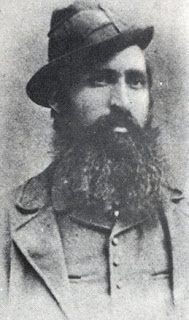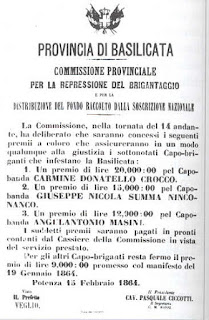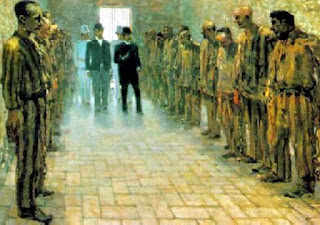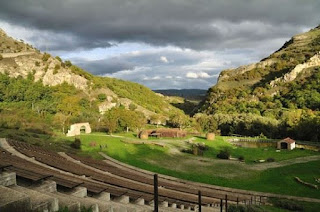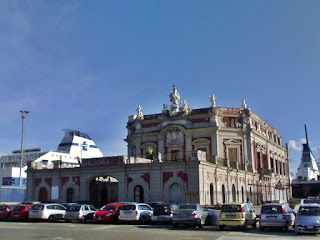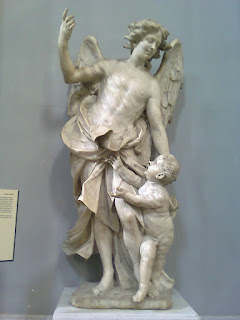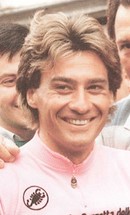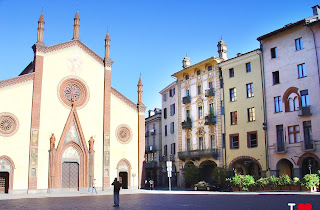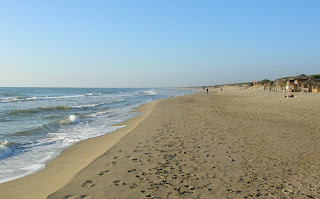Record-breaking host of Sanremo festival
 |
| TV presenter Pippo Baudo has been a familiar face for decades |
Baudo has presented numerous shows for the national broadcaster Rai and for private networks but is probably best known as the host of the annual Sanremo Music Festival and the presenter of the immensely popular Sunday afternoon magazine show Domenica In.
He was the face of Sanremo a record 13 times between 1968 and 2008, eclipsing another much-loved TV host, Mike Bongiorno, who presented the prestigious song contest on 11 occasions.
Baudo has anchored or co-hosted Domenica In 11 times. His appearance on the 2016-17 edition of the show came 37 years after he presented the programme for the first time in 1979.
His other major shows include Settevoci, Canzonissima, Fantastico, Serata d'onore and Novecento.
Pippo - short for Giuseppe - is the son of a lawyer, whose father had ambitions for his son to follow a similar career path.
But Pippo was attracted to the idea of performing. While he was a boy he would play the piano and sing songs during the interval at a theatre owned by a family friend and though he duly studied law at the University of Catania, it was not with complete focus.
 |
| Pippo Baudo (right) with his predecessors on Domenica In (Corrado Montani) and Sanremo (Mike Bongiorno) |
The problem was that it was the night before his graduation, he had no car and there was no way using public transport that he could possibly be in Catania in time for the ceremony. In desperation, he rose at dawn and hitched a life on a farmer’s pick-up truck heading for Catania, spending the journey lying on top of boxes of fruit and vegetables but arriving just in time to graduate.
He never practised in law, however. He made his first appearance on television in 1959 as a pianist and singer with a backing orchestra on variety shows. He began fronting the occasional show in the 1960s before his big break came by chance in 1966.
Baudo had made a pilot episode for Rai of a talent contest called Settevoci - Seven Voices. The television company’s bosses had been underwhelmed and had no plans to broadcast it. But one Sunday afternoon, the reel containing the latest episode of the popular American series Rin Tin Tin did not turn up and Rai had a last-minute gap in their schedule.
 |
| Pippo Baudo in 1970, at the peak of his popularity |
It helped launch the careers of many popular Italian singers and other performers, as have many of Baudo's shows. It is claimed that, to one degree or another, stars such as Al Bano, Beppe Grillo, Tullio Solenghi, Heather Parisi, Eros Ramazzotti, Lorella Cuccarini, Laura Pausini, Giorgia and Andrea Bocelli can all thank Pippo Baudo for giving them the chance to showcase their talents.
Nicknamed “Super Pippo” for his enduring popularity and ability to bounce back from setbacks, Baudo has been married twice, the second time to the opera singer Katia Ricciarelli, from whom he was divorced in 2007. He has two children, Alessandro and Tiziana, and is a grandfather and great-grandfather.
| Via Porta della Terra, a typically elegant street in Militello in Val di Catania |
Militello in Val di Catania is an attractive town on the northern slopes of the Iblean Mountains, about 50km (31 miles) southwest of Catania. It is sometimes known as the Florence of the Iblei because of its wealth of palaces, churches and monasteries. The town had a golden age in the 17th century during the rule of Prince Francesco Branciforte, whose family built the Barresi Branciforte Castle. Although many buildings were destroyed during an earthquake in 1693, considerable work went into rebuilding. In 2002 the town was declared a UNESCO World Heritage Site.
 |
| The main square in Chiaramonte Gulfi |
Nicknamed 'il Balcone della Sicilia' (Sicily's balcony), the town of Chiaramonte Gulfi is perched on a hill 15km (9 miles) north of Ragusa. Its panoramic aspect on a clear day can offer views to the south across the Valley of the Ippari and the towns of Comiso, Vittoria and Acate as far as the Mediterranean sea, and even of Mount Etna in the north. The town is also famed for its olive oil, accredited with the Denominazione d'Origine Protetta (DOP), which means only oil produced within a specific area can be labelled as Chiaramonte oil.
Also on this day:
1422: The birth of condottiero Federico da Montefeltro
1687: The birth of operatic castrato Gatetano Berenstadt
Home




